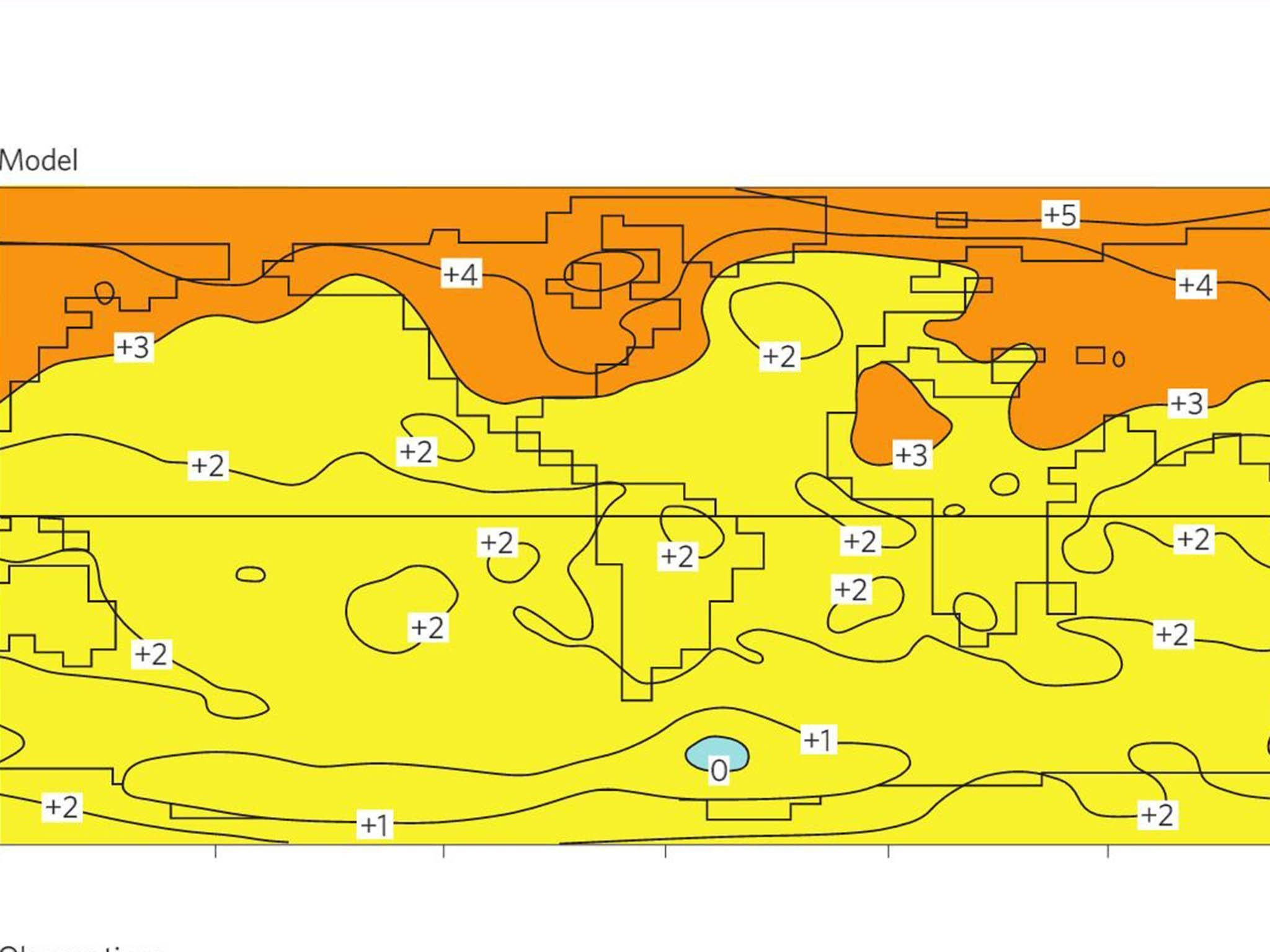Climate change computer model vindicated 30 years later by what has actually happened
Sceptics have long sneered at climate models but one made in the late 1980s has proved remarkably prophetic

Nearly 30 years ago, scientists developed a computer model of the Earth’s climate that predicted the level of global warming – to the ridicule of ‘sceptics’ at a time when there still seemed to be a debate over the issue.
Now two leading researchers have compared the model’s results with what actually happened over the last three decades and, to their surprise, found they were “very similar”.
For example, when it was first made the model came up with unexpected forecast of little or no warming in the Southern Ocean.

To date, this has been borne out by the actual measurements, although a longer period would be required to confirm this trend.
The model also showed warming concentrated in the northern hemisphere, extending down into the continental landmasses of North America, Europe and Asia.
Writing in the journal Nature Climate Change, Dr Ronald Stouffer, head of the climate and ecosystem group at Princeton University, and Dr Syukuro Manabe, a senior meteorologist at the same US college, said they had not expected the model to be so accurate.
“It is quite surprising that the observed and projected pattern of surface temperature change are very similar to each other,” they wrote.
“It … suggests that the model likely contains the key physical processes that control the geographical pattern of global warming at the earth surface.”
They said the model was unlikely to have had the correct distribution of thermal forcing – the factors causing the temperature to rise – but this did appear to be “critical”.
The paper noted a number of other similarities.
“Comparing the observed change with the model projections, one notes that the land areas warm faster than adjacent ocean areas in both the model and in the observations,” the scientists said.
“The warming tends to be largest in high northern latitudes due mainly to the positive albedo feedback of snow and sea ice.
“In the model results, warming is a minimum in the northern North Atlantic: this is not so pronounced in the observations.
“In the model, this minimum is attributable not only to deep, convective mixing of heat but also to the weakening of the Atlantic meridional overturning circulation [a pattern of major currents].
“In sharp contrast to most of the high northern latitudes, temperature change is small in the Southern Ocean in the model results. The area of small temperature change is also seen in the observations.
“If the observed trend of little or no warming continues in the Southern Ocean, it will confirm this surprising early model finding.”
Overall they concluded that the model had made “reliable projections of the warming pattern” and they were “very much encouraged” by its level of accuracy.
“As the observational record lengthens, this evaluation should be made again, potentially using more climate variables,” they added.
“The success of these projections will increase our confidence in current model projections of future climate changes.”
Join our commenting forum
Join thought-provoking conversations, follow other Independent readers and see their replies
Comments